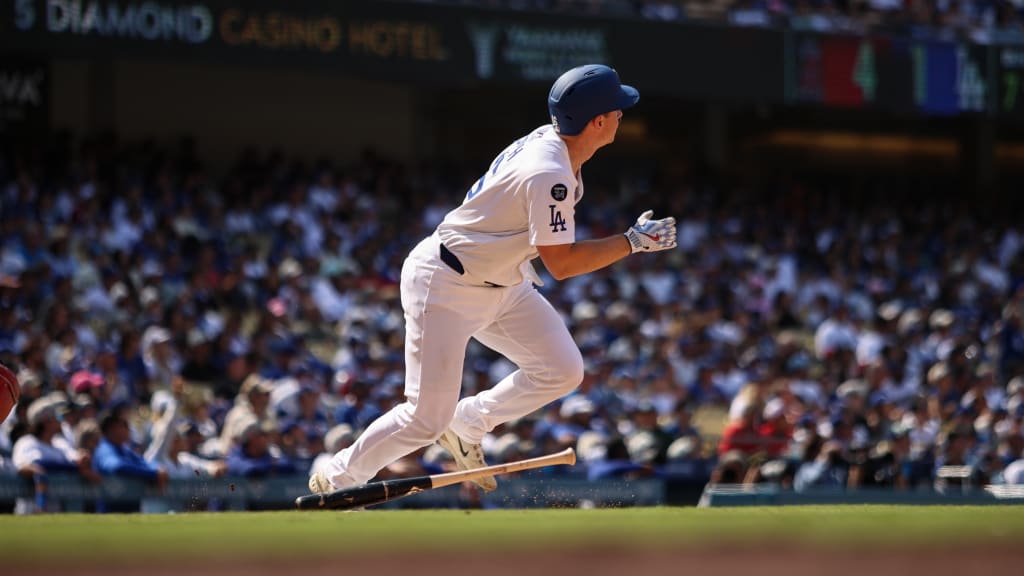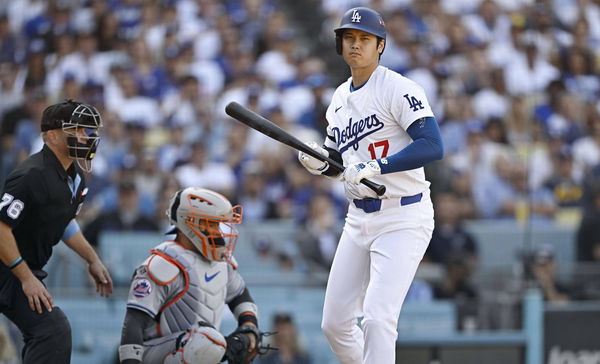
Imago
Credits: MLB.COM

Imago
Credits: MLB.COM
In a tight game when the opposing team sends their best hitter to the plate to change the result, there’s a strategy that comes from the pitching team. Intentional Walk! How many times have we often seen the slugger move comfortably to first base? That calmness is a sign of a well-thought-out choice. Managers use it not to acknowledge defeat but to keep things from getting out of hand. This stops sluggers like Aaron Judge, Shohei Ohtani, Kyle Schwarber, and others from turning the game into team favorites.
Watch What’s Trending Now!
Now, it’s time for a quick look at how it basically works and what the rules are.
ADVERTISEMENT
What is an Intentional Walk? Know its origin and use in baseball
An intentional walk, also known as IBB, represents a defensive team’s deliberate choice to place a batter on first base rather than pitch to him. The strategy has been around since at least the 1870s, when teams learned that giving up first base may keep dangerous hitters from scoring. This tactic allows teams to sidestep particularly formidable batters or create more favorable matchups against subsequent hitters in the lineup.
Teams use intentional walks mostly when a game-changing hitter comes to the plate and a weaker hitter is waiting on deck. The goal is to manage risk.
Teams employ it to set up double plays, avoid power hitters, or face a batter who is weaker and on deck. It’s not about being scared; it’s about having chess-like foresight, where one planned move can change the outcome of the whole inning.
ADVERTISEMENT
And wondering how long the clubhouse can do this? The rules are quite simple, though.
ADVERTISEMENT
What are the rules regarding it? Can a player refuse an Intentional Walk?
There are no regulations in baseball that say how many intentional walks a club can give out in a game. Teams can walk as many hitters as they like, whether that means walking the same hitter several times or spreading walks out among other players. This infinite power lets managers choose their defensive plan depending on how the game is going.
Since 2017, managers can signal intentional walks from the dugout at any time during a plate appearance, and the umpire gives the batter first base right away. Before this modification, the catcher stood up to grab four balls that were thrown outside the strike zone. The old system took a lot of time and sometimes made things dramatic when batters swung at pitches that were too close to the plate.

Imago
Baseball: MLB, Baseball Herren, USA Championship Series Los Angeles Dodgers designated hitter Shohei Ohtani draws a walk in the seventh inning of Game 2 of the National League Championship Series against the New York Mets at Dodger Stadium in Los Angeles on Oct. 14, 2024. PUBLICATIONxINxAUTxBELxBIHxBULxCZExDENxESTxFINxFRAxGEOxGERxGRExHUNxISLxIRLxITAxLATxLTUxLUXxLIExMKDxNORxPORxPOLxROUxSVKxSUIxSRBxSLOxESPxTURxUKxUAExONLY A14AA0003584573P
Once the manager calls for an intentional walk from the dugout, the batter can’t turn it down. The rules say that the defensive team has full control over giving the walk.
ADVERTISEMENT
Before the automatic method, batters had a small chance to change the outcome by swinging at intentional balls if pitchers threw them within reach. This could sometimes turn batters’ attempts to avoid hitting into base hits.
Recently, in Game 3 of the World Series, we all saw how the Blue Jays gave back-to-back intentional walks to Ohtani in the extra innings.
ADVERTISEMENT
Most Intentional Walks in a game
An intentional walk isn’t a new concept in baseball; there have been instances where teams have given so many to the opposing team. Here is the complete list:
- Andre Dawson – 5 intentional walks (May 22, 1990)
The Chicago Cubs outfielder received five free passes from the Cincinnati Reds during a 16-inning game. Dawson entered hitting .346, and the Reds lost 2-1 despite their extreme caution. - Shohei Ohtani – 4 intentional walks (October 27, 2025)
The Los Angeles Dodgers superstar received four intentional walks from the Toronto Blue Jays in Game 3 of the World Series after demolishing pitching with four extra-base hits, including two home runs, in his first four plate appearances. - James Wood – 4 intentional walks (June 29, 2025)
The Washington Nationals player received four free passes from the Angels in a game the Nationals won 7-4. - Barry Bonds – 4 intentional walks (four separate occasions in 2004)
The Giants slugger reached four intentional walks on April 23 against the Dodgers, May 1 against the Marlins, June 12 against the Orioles, and September 22 against the Astros during his record-breaking season. - Manny Ramirez – 4 intentional walks (June 5, 2001)
The Boston Red Sox designated hitter received four free passes from the Detroit Tigers. - Garry Templeton – 4 intentional walks (July 5, 1985)
The San Diego Padres shortstop walked four times against the Pittsburgh Pirates. - Roger Maris – 4 intentional walks (May 22, 1962)
The New York Yankees outfielder received four walks from the Los Angeles Angels during his post-record-breaking 61-home-run campaign. - Ted Kluszewski – 4 intentional walks (July 11, 1959)
The Cincinnati Reds’ first baseman walked four times against the Chicago Cubs.
Every intentional walk has its own narrative to tell, and it’s not just about avoiding someone; it’s also about showing respect. Whether you’re trying to keep a lead or outsmart your opponent, this is a reminder that sometimes, in baseball,
not pitching can be the smartest pitch of all.ADVERTISEMENT
ADVERTISEMENT
ADVERTISEMENT

